Pass Your CompTIA Security+ Certification Easy!
CompTIA Security+ Certification Exams Questions & Answers, Accurate & Verified By IT Experts
Instant Download, Free Fast Updates, 99.6% Pass Rate.

$69.99
Download Free CompTIA Security+ Practice Test Questions VCE Files
| Exam | Title | Files |
|---|---|---|
Exam SY0-701 |
Title CompTIA Security+ |
Files 1 |
CompTIA Security+ Certification Exam Dumps & Practice Test Questions
Prepare with top-notch CompTIA Security+ certification practice test questions and answers, vce exam dumps, study guide, video training course from ExamCollection. All CompTIA Security+ certification exam dumps & practice test questions and answers are uploaded by users who have passed the exam themselves and formatted them into vce file format.
CompTIA Security+ Certification: The Ultimate Guide to Skills, Careers, and Success in Cybersecurity
In today’s interconnected world, cybersecurity has become a critical aspect of any organization’s operations. Companies face constant threats from cybercriminals, ranging from data breaches to ransomware attacks. As technology advances, the need for skilled professionals who can secure networks, protect sensitive information, and manage risks has never been greater. CompTIA Security+ is a globally recognized certification that equips IT professionals with the foundational knowledge and practical skills needed to enter the field of cybersecurity. It is often considered the first stepping stone for individuals aspiring to pursue careers in IT security, and its value is recognized across industries including finance, healthcare, government, and technology.
Security+ is not just a certification for specialists; it is a comprehensive program designed to provide a broad understanding of essential security concepts. This makes it highly suitable for IT professionals at the start of their careers who want to strengthen their expertise, validate their skills, and gain credibility with employers. Unlike some certifications that focus solely on theoretical knowledge, Security+ emphasizes hands-on application and real-world scenarios, ensuring candidates are job-ready upon certification.
The Significance of Security+ Certification
The significance of CompTIA Security+ lies in its wide recognition and practical relevance. Organizations look for certified professionals because it assures them that the individual possesses knowledge in critical security domains such as threat management, cryptography, identity management, and risk mitigation. Security+ certification demonstrates a commitment to professional development and an understanding of best practices for maintaining secure IT environments.
For individuals, Security+ opens doors to better job opportunities, career growth, and higher earning potential. It provides a strong foundation for advanced certifications, making it a strategic starting point for those aiming to become cybersecurity analysts, network administrators, or security consultants. Additionally, it aligns with industry standards and frameworks, giving certified professionals credibility and a competitive edge in the job market.
Core Domains Covered by Security+
Security+ encompasses several domains essential for a well-rounded understanding of cybersecurity. These domains ensure that candidates are familiar with both theoretical knowledge and practical skills necessary for effective security management.
Threats, Attacks, and Vulnerabilities
Understanding threats and vulnerabilities is fundamental in cybersecurity. Security+ covers various types of threats including malware, social engineering tactics, and advanced persistent threats. Candidates learn how to identify, assess, and mitigate potential attacks. This domain emphasizes the importance of staying updated on emerging threats and understanding the methods attackers use to exploit systems.
Architecture and Design
Security+ provides knowledge of secure network design and enterprise architecture. This includes best practices for designing systems that minimize vulnerabilities and implementing security controls that protect data integrity and confidentiality. Candidates gain insight into secure network topologies, cloud security considerations, and virtualization, which are critical in modern IT environments.
Implementation
Implementation focuses on the practical aspects of cybersecurity, such as configuring network devices, managing access controls, and deploying security solutions. Security+ emphasizes the hands-on skills needed to secure endpoints, networks, and applications. This domain bridges the gap between theoretical knowledge and real-world application, ensuring candidates can effectively implement security measures.
Operations and Incident Response
Monitoring and responding to security incidents is a crucial part of any cybersecurity role. Security+ covers the processes and tools used to detect, respond to, and recover from security incidents. Candidates learn about incident response planning, disaster recovery, and business continuity strategies. This domain ensures that professionals can maintain operations while mitigating risks during security events.
Governance, Risk, and Compliance
A strong understanding of governance, risk management, and compliance is essential for IT professionals. Security+ introduces candidates to regulatory requirements, risk management frameworks, and organizational policies. Professionals learn to evaluate risks, implement controls, and ensure compliance with standards such as GDPR, HIPAA, and ISO frameworks. This domain highlights the importance of aligning security practices with business objectives and legal obligations.
Exam Overview
The Security+ exam is designed to test both knowledge and practical skills. It consists of multiple-choice questions, performance-based scenarios, and problem-solving exercises that simulate real-world cybersecurity challenges. Candidates must demonstrate the ability to apply concepts in practical situations, such as configuring security settings or responding to simulated threats.
Preparing for the exam requires a combination of studying core concepts, practicing hands-on labs, and completing practice exams. Candidates are encouraged to familiarize themselves with the exam format, focus on weak areas, and develop problem-solving skills that go beyond rote memorization. Successfully passing the exam validates that the candidate possesses the skills necessary to perform effectively in an entry-level cybersecurity role.
Career Paths with Security+ Certification
Obtaining Security+ certification opens a wide range of career opportunities. It provides a foundational credential that qualifies professionals for various entry-level and mid-level positions in IT and cybersecurity.
Cybersecurity Analyst: Professionals in this role monitor networks, analyze security incidents, and implement protective measures. They play a critical role in identifying threats and preventing breaches.
Security Administrator: Security administrators manage security policies, user access, and system configurations. They ensure that organizational networks and systems remain secure against potential threats.
Network Administrator: Network administrators maintain and secure IT infrastructure, ensuring reliable and safe operation of networks and systems. Security+ equips them with knowledge to handle threats and vulnerabilities effectively.
IT Auditor: IT auditors assess organizational processes, policies, and controls for compliance with security standards. They evaluate risk management practices and recommend improvements to enhance security posture.
Penetration Tester (Entry-Level): Although advanced roles require additional certifications, Security+ provides a foundation for those interested in ethical hacking and penetration testing, teaching how to identify and address vulnerabilities before they are exploited.
Advantages Beyond Employment
Security+ certification provides benefits beyond immediate career prospects. It equips professionals with the knowledge to make informed decisions regarding security, risk management, and compliance. Certified individuals develop a disciplined approach to identifying vulnerabilities and implementing effective countermeasures.
Moreover, Security+ demonstrates a commitment to lifelong learning in cybersecurity, a field that evolves rapidly. Employers value individuals who stay updated with current threats, technologies, and best practices. The certification also enhances credibility when participating in cross-functional teams, advising on security policies, or leading initiatives to protect organizational assets.
Preparing for Security+ Success
Effective preparation is key to success in the Security+ exam. A structured approach ensures comprehensive coverage of essential topics and builds confidence.
Study Plans: Following a study plan aligned with the exam objectives allows candidates to focus on critical areas and manage time effectively.
Hands-On Practice: Engaging in labs and simulated scenarios reinforces theoretical knowledge and develops practical skills.
Practice Exams: Taking sample tests familiarizes candidates with question formats, improves time management, and identifies areas needing improvement.
Community Support: Joining study groups or online forums provides motivation, insights, and opportunities to exchange tips and strategies with peers.
Combining these methods increases the likelihood of passing the exam on the first attempt and ensures that candidates acquire knowledge applicable to real-world cybersecurity tasks.
CompTIA Security+ is more than a certification; it is a foundation for a rewarding career in cybersecurity. It equips professionals with the knowledge, skills, and confidence to protect organizations from evolving threats. For individuals starting their IT journey or seeking to enhance their security expertise, Security+ offers credibility, practical skills, and a clear path to advanced roles and certifications. Earning Security+ signifies a commitment to professional growth and the ability to make meaningful contributions to an organization's security posture.
Deep Dive into Security+ Domains
CompTIA Security+ certification is built on a comprehensive framework that ensures IT professionals have the knowledge and skills necessary to defend organizations against evolving cyber threats. Understanding the domains in detail is critical for both exam success and real-world application. Security+ covers five primary domains: threats, attacks, and vulnerabilities; architecture and design; implementation; operations and incident response; and governance, risk, and compliance. Each domain plays a crucial role in creating a well-rounded cybersecurity professional.
Threats, Attacks, and Vulnerabilities
The first domain emphasizes recognizing and mitigating potential threats to IT systems. Security professionals must understand different types of threats, from malware and ransomware to phishing and social engineering. Malware can take many forms, such as viruses, worms, trojans, and spyware. Each type has a specific method of infiltration, propagation, and impact on systems. Recognizing these threats early allows organizations to prevent breaches before significant damage occurs.
Social engineering is another critical area. Attackers manipulate individuals to gain access to sensitive information or systems. Techniques like phishing emails, pretexting, and baiting exploit human psychology rather than technical vulnerabilities. Security+ trains professionals to detect and respond to these tactics effectively, combining technical controls with awareness programs.
Vulnerabilities also include weaknesses in software, hardware, and network configurations. Understanding common vulnerabilities, such as misconfigured firewalls, outdated software, or weak authentication protocols, allows professionals to implement preventive measures. The domain also covers advanced persistent threats (APTs), which are long-term targeted attacks often aimed at stealing sensitive data or causing disruption.
Architecture and Design
A solid foundation in architecture and design is crucial for creating secure systems. Security+ emphasizes building infrastructure with security in mind, known as “secure by design.” This includes knowledge of network topologies, segmentation, and access controls to reduce potential attack surfaces. Professionals learn to design secure networks, including implementing VLANs, firewalls, intrusion detection and prevention systems, and secure wireless protocols.
Cloud computing is increasingly prevalent, and Security+ addresses secure cloud deployment. Candidates learn how to protect data in public, private, and hybrid clouds, including understanding shared responsibility models and encryption practices. Virtualization and container security are also covered, ensuring professionals can manage modern IT environments effectively.
Identity and access management (IAM) is a critical component of secure architecture. Professionals learn to implement authentication and authorization mechanisms, such as multifactor authentication (MFA), single sign-on (SSO), and role-based access control (RBAC). These controls help ensure that only authorized users have access to sensitive systems and data.
Implementation Strategies
Implementation focuses on the hands-on skills required to secure IT environments. Security+ ensures that candidates can apply theoretical knowledge to real-world scenarios. One key aspect is securing endpoints, including desktops, laptops, mobile devices, and IoT devices. Professionals learn to apply patches, update software, and implement antivirus solutions to maintain system integrity.
Network security implementation involves configuring routers, switches, and firewalls to protect against unauthorized access. Security+ covers encryption techniques, such as SSL/TLS, IPsec, and VPNs, which safeguard data in transit. Professionals also learn to implement wireless security protocols like WPA3 and secure access points to minimize vulnerabilities.
Additionally, implementation includes configuring authentication methods and identity management solutions. Professionals gain practical knowledge in managing user accounts, setting permissions, and auditing access logs to detect anomalies. These skills are essential for maintaining a secure operational environment.
Operations and Incident Response
Operations and incident response are critical for maintaining security in an organization. Security+ teaches candidates how to monitor networks for suspicious activity, respond to incidents, and maintain business continuity. Professionals learn to use security information and event management (SIEM) tools to analyze logs and detect anomalies. Effective monitoring allows organizations to identify potential threats before they escalate.
Incident response planning is a central component of this domain. Security+ emphasizes the importance of preparing for incidents through detailed response plans, including roles, responsibilities, and communication protocols. Professionals learn to handle breaches, malware infections, and other security events systematically, minimizing downtime and damage.
Business continuity and disaster recovery strategies ensure that organizations can recover quickly from security incidents. Security+ provides guidance on backup strategies, redundancy, and failover mechanisms. Candidates also learn how to conduct post-incident reviews to identify lessons learned and improve future responses.
Governance, Risk, and Compliance
The final domain, governance, risk, and compliance (GRC), equips professionals with knowledge of policies, regulations, and frameworks that shape organizational security practices. Security+ covers common standards such as ISO 27001, NIST, GDPR, and HIPAA, emphasizing how to align security strategies with legal and regulatory requirements.
Risk management involves identifying, assessing, and mitigating potential threats to an organization. Professionals learn to prioritize risks based on impact and likelihood, applying appropriate controls to reduce vulnerabilities. Policies and procedures are critical in creating a security-conscious culture, guiding employees in maintaining safe practices and protecting sensitive information.
Auditing and compliance are also covered, ensuring that organizations can demonstrate adherence to security standards. Professionals gain skills in evaluating systems, performing assessments, and recommending improvements to strengthen overall security posture.
Real-World Applications of Security+ Skills
Security+ is highly practical, and its value extends beyond passing an exam. The knowledge gained can be applied to everyday tasks in IT and cybersecurity roles. For instance, understanding malware detection techniques helps analysts respond to infections before they cause widespread damage. Implementing secure architectures reduces the risk of breaches, while incident response planning ensures rapid recovery from security events.
In addition, Security+ prepares professionals to interact with stakeholders effectively. By understanding governance and compliance requirements, certified individuals can advise management on security strategies, risk mitigation, and policy development. These skills are invaluable for fostering a security-conscious culture within organizations.
Security+ also provides a foundation for advanced certifications and specialized roles. Professionals who wish to pursue careers in penetration testing, cloud security, or network defense can build on the core knowledge gained through Security+. This creates a clear pathway for career growth and continuous professional development.
Common Challenges and How to Overcome Them
While Security+ is accessible to professionals at the start of their careers, candidates may face challenges during preparation. The breadth of topics can seem overwhelming, and some areas may require more practical exposure.
To overcome these challenges, candidates should adopt a structured approach. Breaking down the exam objectives into manageable sections helps ensure thorough coverage. Hands-on practice is crucial, as it reinforces learning and builds confidence in applying concepts.
Time management is another common challenge during exam preparation. Creating a study schedule with dedicated sessions for each domain, combined with regular review and practice tests, increases retention and readiness. Peer support, through study groups or forums, can provide motivation, clarify doubts, and share valuable insights.
Finally, maintaining a mindset focused on understanding rather than memorization is key. Security+ emphasizes applied knowledge, so candidates should aim to grasp how concepts work in real-world scenarios rather than simply recalling facts.
Preparing Effectively for the Security+ Exam
Earning the CompTIA Security+ certification requires more than just reading about cybersecurity concepts. Success depends on a structured study plan, hands-on experience, and an understanding of the exam format. Part 3 of this series focuses on how candidates can prepare strategically, maximize their learning, and approach the exam with confidence.
Understanding the Exam Structure
The Security+ exam is designed to evaluate both theoretical knowledge and practical skills. It typically includes multiple-choice questions, drag-and-drop exercises, and performance-based tasks that simulate real-world scenarios. Candidates are expected to demonstrate problem-solving abilities, decision-making skills, and the capacity to apply security principles in practical situations.
Understanding the exam format is crucial for effective preparation. The multiple-choice questions test conceptual knowledge, while performance-based questions challenge candidates to implement security solutions, troubleshoot configurations, and respond to hypothetical security incidents. Familiarity with these question types helps reduce anxiety during the exam and allows for better time management.
Creating a Structured Study Plan
A well-organized study plan is the foundation of exam success. Candidates should start by reviewing the official Security+ exam objectives to ensure they cover every domain comprehensively. Breaking down the syllabus into smaller, manageable sections makes the process less overwhelming and more effective.
A typical study plan may include:
Daily or weekly study goals, focusing on one domain at a time
Review sessions for previously studied topics
Scheduled practice tests to assess progress
Time allocated for hands-on labs and practical exercises
Consistency is key. Regular study sessions, even if short, help reinforce concepts and build confidence. Planning sufficient time for revision before the exam ensures that knowledge is solidified and gaps are addressed.
Utilizing Multiple Learning Resources
Security+ candidates benefit from using diverse study materials. Relying on a single source may leave gaps in understanding. Combining textbooks, video tutorials, practice exams, and interactive labs provides a more comprehensive learning experience.
Textbooks and study guides provide detailed explanations of concepts, while video tutorials can help visualize complex topics, such as network security architectures or encryption processes. Practice exams familiarize candidates with question formats and highlight areas needing improvement. Hands-on labs allow candidates to apply theoretical knowledge in simulated environments, which is especially valuable for performance-based exam questions.
Hands-On Practice: The Key to Success
One of the most critical aspects of Security+ preparation is hands-on practice. Understanding concepts is not enough; candidates must know how to apply them in real-world scenarios.
Practical exercises may include:
Configuring firewalls and access controls to protect networks
Implementing encryption for data in transit and at rest
Setting up user accounts and applying role-based access controls
Monitoring logs and responding to simulated security incidents
By repeatedly performing these tasks, candidates develop muscle memory and confidence in their ability to solve problems under exam conditions. Hands-on experience also enhances understanding of abstract concepts, making them easier to recall during the exam.
Practice Exams and Review
Regular practice exams are an essential component of preparation. They help candidates become familiar with the types of questions they will encounter and improve time management skills. Performance-based questions can be particularly challenging, so practicing similar scenarios helps build confidence.
After completing a practice exam, candidates should thoroughly review incorrect answers to understand why mistakes were made. This review process identifies weak areas and provides an opportunity to revisit and reinforce those topics. Over time, consistent practice reduces the likelihood of errors during the actual exam.
Time Management Strategies
Effective time management during both preparation and the exam is critical. During study sessions, candidates should allocate time proportionally based on domain complexity and personal strengths. Spending extra time on challenging areas while maintaining a balanced approach ensures comprehensive coverage.
During the exam, time management is equally important. Candidates should aim to answer easier questions first, flagging more difficult ones for later review. This approach prevents spending too much time on a single question and ensures all questions are addressed within the allotted time.
Leveraging Study Groups and Peer Support
Study groups can provide significant benefits for Security+ candidates. Collaborating with peers allows for the exchange of ideas, discussion of complex topics, and clarification of doubts. Study groups also provide motivation and accountability, helping candidates maintain consistent study habits.
Engaging with peers can simulate real-world collaboration, as security professionals often work in teams to analyze threats, respond to incidents, and implement security measures. The insights gained from group discussions can enhance understanding and retention of key concepts.
Focused Domain Review
As the exam approaches, candidates should prioritize reviewing high-weight domains and reinforcing weaker areas. This includes revisiting critical topics such as threat analysis, risk management, and incident response. Creating summary notes, flashcards, or mind maps can aid in quick recall of essential information.
Additionally, reviewing practical scenarios from past experiences or labs reinforces the application of concepts. This method helps candidates connect theoretical knowledge with real-world cybersecurity challenges, which is particularly useful for performance-based questions.
Maintaining a Balanced Approach
Preparing for Security+ can be demanding, so maintaining a balanced approach is essential. Candidates should schedule regular breaks, maintain healthy sleep patterns, and manage stress effectively. Physical activity, mindfulness, or other stress-relief practices can improve focus and retention.
A balanced approach ensures that candidates stay motivated, avoid burnout, and retain knowledge more effectively. Confidence built through consistent study and practice is as important as mastering technical concepts.
Real-World Application During Preparation
Applying Security+ knowledge outside of the study environment enhances understanding. Candidates can practice implementing security measures on personal networks or home labs, such as securing routers, testing firewall configurations, or encrypting sensitive files.
Observing real-world security events, reading case studies, or following cybersecurity news also reinforces learning. Understanding how threats manifest in real organizations provides context for exam concepts and prepares candidates for practical responsibilities in their future roles.
Common Mistakes to Avoid
Even with thorough preparation, some candidates make avoidable mistakes. Common pitfalls include:
Over-relying on memorization rather than understanding concepts
Ignoring performance-based questions during practice
Skipping weaker domains or difficult topics
Not managing study time effectively
Neglecting self-care, leading to fatigue or stress
Being aware of these mistakes and proactively addressing them can significantly improve exam readiness and overall performance.
Exam Day Strategies
On exam day, candidates should approach the test strategically. Tips include:
Arriving early to reduce stress and acclimate to the testing environment
Reading questions carefully to avoid misinterpretation
Managing time efficiently, tackling easier questions first
Using logical reasoning for unfamiliar questions, eliminating clearly incorrect options
Staying calm and focused, remembering that preparation and practice have built the necessary knowledge
These strategies help ensure that candidates can perform at their best and leverage the preparation they have invested.
Beyond the Exam: Applying Knowledge Professionally
Preparation for Security+ is valuable not only for passing the exam but also for professional application. Candidates learn skills that are immediately applicable in real-world roles, including threat detection, network security implementation, and incident response.
Certified professionals can contribute to their organizations by identifying vulnerabilities, implementing preventive measures, and supporting compliance initiatives. This practical application of Security+ knowledge makes the certification a tangible asset that enhances both employability and professional credibility.
Effective preparation for CompTIA Security+ requires a combination of structured study, hands-on practice, and strategic review. Understanding the exam format, creating a study plan, leveraging diverse learning resources, and focusing on practical application are all critical components of success.
By mastering these preparation techniques, candidates increase their chances of passing the exam on the first attempt and develop skills that are directly applicable in professional settings. Security+ is not just a certification; it is a gateway to a rewarding cybersecurity career, providing the knowledge, confidence, and practical experience needed to navigate a rapidly evolving digital landscape.
Career Opportunities with Security+ Certification
CompTIA Security+ certification opens doors to a variety of roles in IT and cybersecurity. It equips professionals with foundational knowledge that is highly valued across industries, including finance, healthcare, government, and technology. By validating expertise in securing networks, managing risks, and responding to incidents, Security+ prepares individuals for positions that require practical, applied security skills.
Cybersecurity Analyst
A cybersecurity analyst monitors networks for suspicious activity, investigates potential security breaches, and implements protective measures. Security+ equips analysts with the knowledge to identify threats, evaluate vulnerabilities, and respond effectively to incidents. Analysts also document findings, report risks to management, and develop strategies to prevent future security events. This role is often a starting point for professionals aspiring to specialize in areas such as threat intelligence or penetration testing.
Security Administrator
Security administrators are responsible for managing and maintaining security policies, configurations, and access controls within an organization. They ensure that systems are configured securely, implement encryption and authentication measures, and monitor compliance with organizational policies. Security+ provides the skills needed to manage these responsibilities effectively, making certified professionals highly valuable in protecting company assets.
Network Administrator
Network administrators maintain the integrity and security of an organization’s network infrastructure. They configure routers, switches, and firewalls, troubleshoot network issues, and implement protocols that secure data in transit. Security+ training helps network administrators understand security principles, detect vulnerabilities, and enforce policies that prevent unauthorized access. This knowledge is essential for ensuring that networks remain operational, secure, and resilient against threats.
IT Auditor
IT auditors evaluate systems, policies, and procedures to ensure compliance with security standards and regulatory requirements. Security+ covers governance, risk, and compliance principles that are critical for auditors. Certified professionals can assess organizational practices, identify weaknesses, and recommend improvements to strengthen security posture. IT auditors play a key role in bridging technical and managerial aspects of cybersecurity.
Penetration Tester (Entry-Level)
While advanced penetration testing roles often require additional certifications, Security+ provides a foundation for aspiring ethical hackers. Professionals learn to identify vulnerabilities, understand attack vectors, and implement preventive measures. Security+ knowledge is valuable for entry-level penetration testers who are tasked with testing systems and networks to uncover security weaknesses before malicious actors exploit them.
Advancing Your Career with Security+
Earning Security+ certification is often the first step toward more advanced cybersecurity roles. The certification provides a foundation for higher-level credentials such as Certified Information Systems Security Professional (CISSP), Certified Ethical Hacker (CEH), or CompTIA Cybersecurity Analyst (CySA+). These certifications build on the knowledge gained from Security+, allowing professionals to specialize and take on leadership positions in cybersecurity.
Security+ also provides a competitive advantage when seeking promotions or transitioning to higher-paying roles. Employers value professionals who can demonstrate both theoretical knowledge and practical expertise. The certification signals a commitment to professional development, making certified individuals more attractive candidates for senior positions.
Salary Expectations for Security+ Professionals
The value of Security+ certification extends to financial benefits as well. Salaries for certified professionals vary depending on experience, location, industry, and role. Entry-level positions, such as security analysts or administrators, typically offer competitive starting salaries, with opportunities for rapid growth as experience and additional certifications are gained.
In the United States, for example, entry-level security analysts can expect salaries ranging from $60,000 to $80,000 annually. Network administrators with Security+ may earn between $65,000 and $85,000, while IT auditors can command salaries from $70,000 to $90,000. As professionals gain experience and pursue advanced certifications, salaries can increase significantly, reflecting the expertise and value brought to organizations.
Globally, the demand for certified cybersecurity professionals continues to grow, contributing to competitive compensation packages. Security+ holders are recognized as skilled practitioners capable of mitigating risks and protecting critical systems, making them essential assets in today’s threat landscape.
Industry Recognition and Job Market Demand
CompTIA Security+ is widely recognized by employers and government agencies. It is often listed as a requirement for IT security roles and is approved by the U.S. Department of Defense for certain positions. The certification aligns with industry standards and frameworks, demonstrating that certified professionals possess the skills needed to protect sensitive data, comply with regulations, and implement best practices in cybersecurity.
The increasing frequency and sophistication of cyber attacks have heightened demand for skilled professionals. Organizations seek individuals who can proactively secure networks, detect vulnerabilities, and respond to incidents. Security+ certification ensures that professionals are prepared to meet these demands, making them highly employable and in high demand across sectors.
Soft Skills Enhanced by Security+ Certification
While technical expertise is critical, Security+ also helps professionals develop soft skills that are essential in the workplace. These include:
Problem-Solving: Analyzing threats, identifying vulnerabilities, and implementing solutions enhances critical thinking skills.
Communication: Explaining security risks, policies, and procedures to non-technical stakeholders improves collaboration and clarity.
Decision-Making: Evaluating options during security incidents and choosing appropriate responses strengthens judgment and responsibility.
Attention to Detail: Monitoring systems and identifying subtle anomalies fosters precision and vigilance.
Employers value these soft skills in combination with technical knowledge, as they contribute to a well-rounded, effective cybersecurity professional.
Real-World Impact of Security+ Professionals
Security+ certified professionals have a tangible impact on organizational security. By implementing preventive measures, monitoring for threats, and responding to incidents, they protect sensitive data and maintain business continuity. Organizations benefit from reduced risk exposure, compliance with regulatory requirements, and improved overall security posture.
In addition, Security+ professionals often contribute to creating a security-conscious culture within their organizations. By educating colleagues, advising management, and promoting best practices, they help integrate security into daily operations. This proactive approach is essential in reducing human error, one of the most common causes of security breaches.
Career Growth Strategies Post-Security+
To maximize the benefits of Security+ certification, professionals should consider continuous learning and skill development. Pursuing advanced certifications, such as CySA+, CEH, or CISSP, allows individuals to specialize in areas like threat intelligence, ethical hacking, or cybersecurity management.
Networking with industry professionals, attending conferences, and staying updated on emerging threats and technologies also enhance career growth. Practical experience in real-world scenarios is invaluable, as it complements theoretical knowledge and demonstrates the ability to handle complex security challenges.
Taking on challenging projects or leadership roles within security teams can accelerate advancement. By combining certification, experience, and continuous learning, Security+ professionals can transition into senior positions, including security managers, analysts, and consultants.
Balancing Career Advancement with Continuous Education
The field of cybersecurity is constantly evolving, requiring professionals to stay current with emerging technologies, threats, and best practices. Security+ certification provides a solid foundation, but ongoing education is essential for long-term success.
Strategies for continuous education include:
Enrolling in specialized training programs
Participating in workshops and webinars
Reading industry publications and threat reports
Engaging in online communities and professional networks
By maintaining a commitment to learning, professionals ensure that their skills remain relevant, their knowledge is up to date, and their value to employers continues to grow.
CompTIA Security+ certification is a gateway to numerous career opportunities in cybersecurity and IT. It equips professionals with the knowledge, skills, and confidence to protect organizations from threats, ensure compliance, and contribute to overall security strategy.
The certification enhances employability, provides competitive salaries, and offers a pathway to advanced roles and certifications. Beyond technical expertise, Security+ also fosters soft skills such as problem-solving, communication, and decision-making, which are essential for professional success.
For individuals aspiring to build a long-term career in cybersecurity, Security+ provides a strong foundation. It opens doors to entry-level and mid-level roles while supporting continuous growth and specialization in a dynamic and high-demand field. By earning Security+, professionals position themselves as capable, knowledgeable, and indispensable assets to any organization.
The Long-Term Benefits of Security+ Certification
CompTIA Security+ certification is more than just a credential for passing an exam. It is a long-term investment in a professional’s career, providing foundational knowledge, practical skills, and industry recognition that can support growth for years to come. Security+ prepares professionals to handle cybersecurity challenges in an evolving digital landscape, ensuring they remain valuable assets to employers.
One of the most significant benefits is credibility. Security+ is globally recognized, meaning that certified professionals are trusted to implement security practices and respond to threats effectively. Employers, government agencies, and organizations worldwide value this certification because it ensures that candidates meet industry-standard security competencies.
In addition to credibility, Security+ promotes adaptability. Technology and cyber threats are constantly evolving, and professionals must stay informed to remain effective. The certification provides a strong foundation in principles that apply across technologies and environments, making it easier to learn new tools, frameworks, and techniques as they emerge.
Advanced Career Opportunities
While Security+ equips professionals for entry- and mid-level roles, it also serves as a stepping stone to advanced positions. Certified individuals can pursue specialized certifications such as Certified Information Systems Security Professional (CISSP), Certified Ethical Hacker (CEH), or CompTIA Cybersecurity Analyst (CySA+). These certifications build on Security+ knowledge and allow professionals to advance into roles such as security architect, penetration tester, threat analyst, or cybersecurity manager.
Security+ also opens opportunities for leadership positions within security teams. Professionals with practical experience and foundational knowledge can manage security operations, oversee compliance programs, or lead incident response efforts. By demonstrating both technical competence and professional credibility, Security+ holders position themselves for career advancement and increased responsibility.
Staying Ahead in the Cybersecurity Field
The cybersecurity landscape is dynamic and requires continuous learning. Security+ provides a framework for understanding threats, vulnerabilities, and defensive measures, but ongoing professional development is essential. Certified professionals can stay ahead by:
Monitoring emerging threats and security trends
Engaging in ongoing training and workshops
Participating in cybersecurity communities and forums
Practicing with labs and simulations to refine skills
Remaining current ensures that professionals can anticipate threats, implement proactive measures, and maintain organizational security, keeping their skills relevant and in demand.
Future Trends in Cybersecurity
The field of cybersecurity is expanding rapidly, driven by technological advancements and increasing threats. Security+ equips professionals with foundational skills that apply to future trends, such as:
Cloud Security: As more organizations migrate to cloud environments, professionals must secure cloud resources, implement encryption, and manage identity and access controls.
Internet of Things (IoT) Security: The growing use of connected devices introduces new vulnerabilities, requiring knowledge of network segmentation, device authentication, and secure communication protocols.
Artificial Intelligence and Machine Learning: AI and ML are being used to detect anomalies and automate threat response, making understanding data analysis and automation tools increasingly important.
Zero Trust Architecture: This security model assumes no user or device is automatically trusted, emphasizing continuous verification, least-privilege access, and network segmentation. Security+ provides the foundational knowledge to understand and implement these concepts.
By grounding professionals in core security principles, Security+ prepares them to adapt to these trends and implement proactive, forward-thinking security strategies.
Continuous Learning and Professional Development
Long-term success in cybersecurity requires a commitment to continuous learning. Security+ is an entry point that encourages professionals to develop skills incrementally. After achieving Security+, professionals can focus on:
Specialized Certifications: Pursuing certifications in areas such as cloud security, penetration testing, or cybersecurity management.
Advanced Degrees or Training: Obtaining further education in cybersecurity, information technology, or risk management.
Professional Networking: Engaging with peers, attending conferences, and participating in security communities to exchange knowledge and learn best practices.
Continuous development ensures that professionals remain competitive, effective, and ready to handle new challenges as technology evolves.
Security+ in Organizational Impact
Security+ certified professionals contribute significantly to organizational security. They are capable of assessing risks, implementing protective measures, and responding to incidents effectively. Their expertise reduces the likelihood of breaches, ensures compliance with regulatory requirements, and strengthens overall security posture.
Moreover, Security+ professionals help cultivate a culture of security awareness within organizations. By educating staff, advising management, and promoting best practices, they create an environment where security is integrated into daily operations. This proactive approach reduces human error and reinforces the importance of cybersecurity at every level.
Long-Term Career Growth and Salary Potential
Earning Security+ can have a lasting impact on career trajectory and earning potential. Entry-level professionals benefit from competitive salaries and opportunities for rapid advancement. As experience and additional certifications are gained, professionals can move into higher-paying, specialized roles.
In addition to salary increases, Security+ certification provides mobility and flexibility. Professionals can transition between industries, roles, and geographic locations more easily, as the certification is recognized globally. It demonstrates competence in foundational security skills, making certified individuals attractive to a wide range of employers.
Preparing for the Next Steps
After achieving Security+, professionals are encouraged to plan their next steps strategically. This includes evaluating career goals, identifying areas of specialization, and pursuing additional certifications that align with professional aspirations.
Some potential paths include:
Cybersecurity Analyst: Deepening skills in monitoring threats, analyzing incidents, and deploying defensive measures.
Penetration Tester: Developing expertise in ethical hacking, vulnerability assessment, and security testing.
Security Architect: Designing and implementing comprehensive security systems and policies.
Security Manager: Leading teams, managing policies, and overseeing organizational security strategy.
Each of these paths builds on the foundational knowledge and practical skills gained through Security+, offering long-term career satisfaction and growth.
Leveraging Security+ for Professional Credibility
Security+ certification not only validates technical expertise but also demonstrates professionalism and commitment. Employers value individuals who invest in their skills and maintain up-to-date knowledge in a rapidly evolving field.
Certified professionals can leverage their credentials to gain credibility in meetings, presentations, and project leadership roles. They are recognized as capable of making informed decisions regarding security risks, compliance, and incident response. This credibility enhances professional reputation and opens doors to leadership opportunities.
Conclusion
CompTIA Security+ certification is a foundational credential that provides long-term benefits for professionals pursuing careers in cybersecurity. It equips candidates with practical skills, theoretical knowledge, and industry-recognized credibility. Security+ prepares individuals for entry-level and mid-level roles while serving as a stepping stone to advanced certifications, specialized skills, and leadership positions.
The certification empowers professionals to stay ahead of emerging threats, adapt to evolving technologies, and make a tangible impact on organizational security. It also enhances employability, salary potential, and career flexibility, making it a valuable investment for anyone seeking to build a sustainable, rewarding career in cybersecurity.
By completing the Security+ certification journey, professionals position themselves as knowledgeable, capable, and proactive contributors to organizational security, ready to tackle the challenges of today and tomorrow’s digital landscape.
ExamCollection provides the complete prep materials in vce files format which include CompTIA Security+ certification exam dumps, practice test questions and answers, video training course and study guide which help the exam candidates to pass the exams quickly. Fast updates to CompTIA Security+ certification exam dumps, practice test questions and accurate answers vce verified by industry experts are taken from the latest pool of questions.
CompTIA CompTIA Security+ Video Courses






Top CompTIA Certification Exams
Site Search:




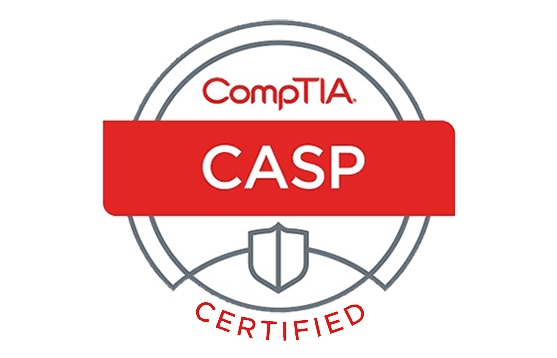
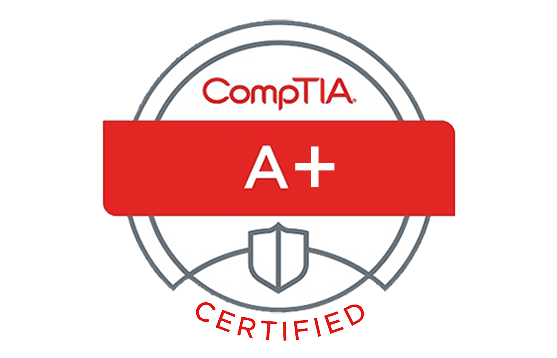
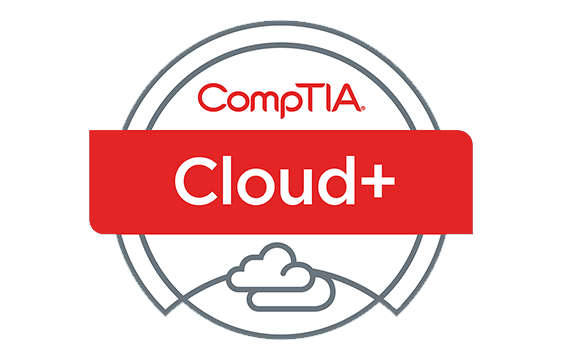
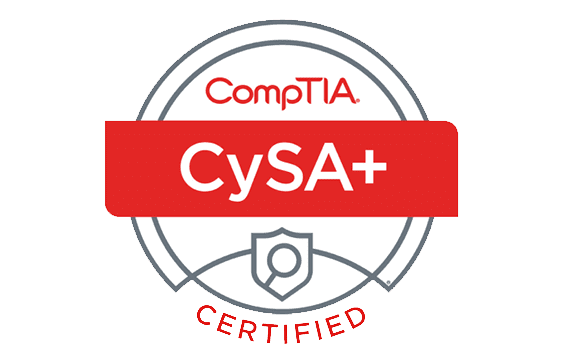


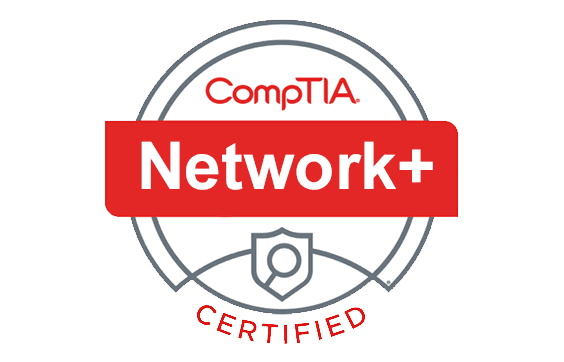

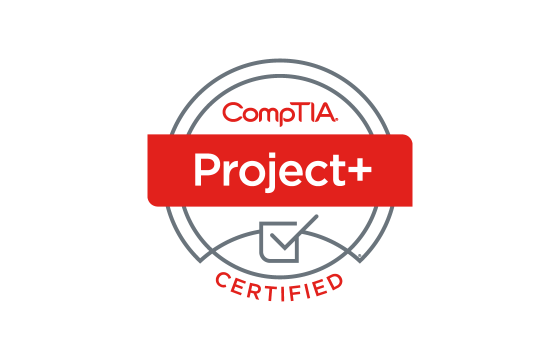
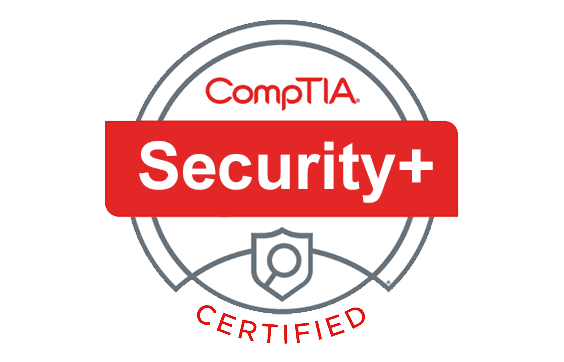





Passed with 811. Premium Dump questions are valid, but I would highly recommend that you go through the content and cross verify the answers in dump.
Very good
I decided to go for the new SY0-601 test and found these preparation materials. It turned out that a friend of mine successfully took some tests with the help of this website, so I decided to go for it and buy a premium file package. Not all of the questions were the same during the test, but I think that the random question generator gave me the least popular questions. Eventually, I passed the test.
I passed the exam with 830 points, and I was not sure that I even pass. However, most questions came from the SY0-501 questions and answers. So, it was quite easy to deal with them during the test.
After I passed my exam with 80% passing score using the Security+ premium dumps I can say that the materials here are 100% valid. I got a lot of questions from the practice test and was able to answer most of them. Thanks, ExamCollection!